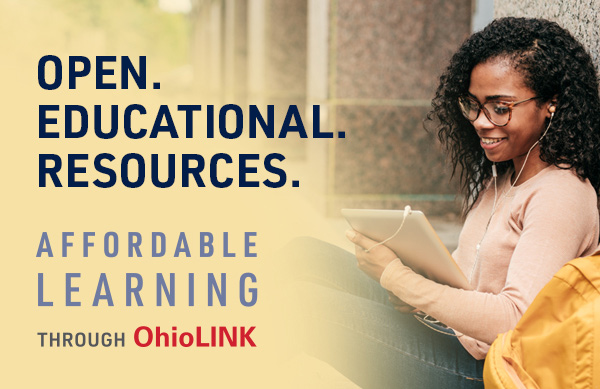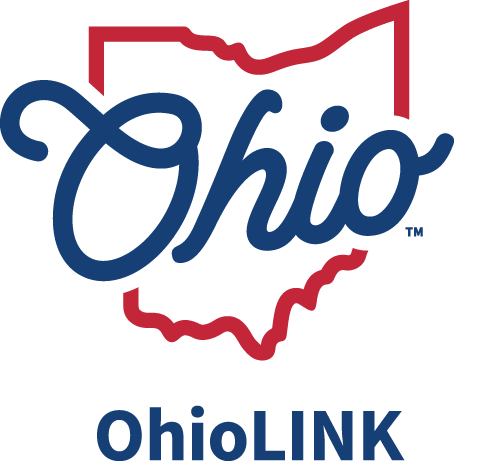A team of applied mathematics students at Baldwin Wallace University has confirmed through a data analysis project that the state’s current delivery system is the most cost-effective way to transport more than six million books and circulating materials among Ohio academic and public libraries annually. This system allows library users greatly expanded access to library collections across the state by providing an efficient method for requested materials to be delivered locally.
“We are very pleased to have demonstrated that our current approach for the academic and public libraries’ statewide lending service provides significant savings for the state,” said OhioLINK Executive Director Amy Pawlowski.
The students, led by Brent Strunk, professor and chair of the Department of Mathematics, were part of a senior capstone project that gives students real-world opportunities to work with public or private organizations to apply their quantitative skills. This year his students worked with staff at OhioLINK, Ohio’s academic library consortium, and the State Library of Ohio to compare the efficiency and cost of using the current courier, Priority Dispatch, to a known alternative, the U.S. Postal Service’s Media Mail.
“Working with the students was not only a great way to contribute to their education, but also a good opportunity for a third-party analysis of the courier service cost-effectiveness, which was under a new contract," said Wendy Knapp, State Librarian of Ohio. “While the State Library could provide data on pricing models for logistics providers, I knew that because of our decentralized system for the public libraries, Baldwin Wallace also would need to work with OhioLINK to access necessary delivery data.”
The State Library of Ohio oversees the competitive delivery contract with Priority Dispatch covering the 1,355 public and academic library delivery locations across the state. While the State Library of Ohio manages the day-to-day operations for Ohio's public libraries, OhioLINK funds the delivery service for its 117 academic library members and provides the technical expertise to maintain the shared catalog. The shared academic library catalog contains records for more than 38 million items, including scholarly books, periodicals, maps, music scores, and audiovisual materials. In addition, 45 public libraries that belong to the SearchOhio library consortium are also able to borrow from OhioLINK member institutions’ libraries.
“Rather than being limited to borrowing from their own campus’ collection, our library users have access to a vast selection of materials delivered within 3-5 days,” Pawlowski said about the benefits of the shared lending service. “Libraries can avoid spending their time and budget on purchasing duplicative materials already in the network.”
When Strunk of Baldwin Wallace University approached Knapp about working with his capstone class on a relevant research project, she was immediately interested in using the opportunity to examine how efficiently the courier’s regional hubs were moving materials through the system, as well as in identifying potential problems.
Strunk was enthusiastic about the project, as it would require both pure and applied mathematics to examine a rich set of real-world data and analyze an issue of importance for state library services.
“We like to have a senior project that is outward facing so students can learn how to communicate their work process and results with those who are not math-oriented,” Strunk said. “This project was successful beyond my estimations.”
Strunk met with Knapp to learn more about the lending service and courier operation, and then briefed the original student team, which included Kailin Breedlove, Moore Bright, Bryant Burns, Malini Gaddamanugu and Parker Stevens. The students began building a mathematical model of how the delivery system worked.
“By the end of fall semester, we had a very good model, but we needed to test it,” Strunk said. “That's where OhioLINK came in.”
During the next semester, OhioLINK delivered their data set and filled in some gaps in the information about the courier service, Strunk said. The spring student team of Breedlove, Bright, and Moore designed the testing procedure and “cleaned up” the data, making it consistent and putting it into a form they could utilize in the mathematical model to test the effectiveness of the service.
The students also examined the delivery route logistics to identify geographic areas that were operating particularly efficiently and how the frequency of individual library deliveries affected the performance of the entire system.
“In the fall our model had generous assumptions,” Strunk said. “When we ran the testing regime, we found that the service moved much faster than we expected. Deliveries that took 1 to 2 days we thought would have taken 5 to 6 days.”
The study determined that the current courier service is more cost-effective for the state system than Media Mail would be.
“From the libraries side of it, we were able to give a ‘clean bill of health.’ Everything was working really great,” Strunk said.
For the Baldwin Wallace students, the project offered learning experiences with not only data analysis and model building but with real-world client communication. The students needed to create data visualizations and explain their analytical processes to an unfamiliar audience, Strunk explained. The team presented their progress and findings to OhioLINK and the State Library three times.
Student Kailin Breedlove enjoyed working with real data, compared to other classroom exercises that use theoretical data, and interacting with a client.
“Just working closely with the organization was something completely different; it was nerve-racking but exciting,” Breedlove said. “It’s a big organization, and you want to make sure you are doing everything well for them.”
Breedlove believes that the skills gained during the capstone project, which included team collaboration, communication, and project management, will aid her pursuit of a data analysis or actuary job now that she has graduated from the university.
“I’m very grateful for the experience and for my professor having that connection to allow us to work with the libraries’ data,” Breedlove said. “I think it is something that will help me in the future.”
Graduates of Baldwin Wallace’s applied mathematics program go on to careers in areas such as logistics, quantitative analysis and data analysis, in industries such as finance, health care, and manufacturing, Strunk explained. The Baldwin Wallace senior capstone project is designed to help students gain more real-world experience before they graduate.
“It’s a good experience for seniors as they go out and look for jobs, as it gives them tangible work to show an employer what they can do,” Strunk said.
In addition to verifying the effectiveness of the current delivery system, the Baldwin Wallace team also provided study protocols and R code, statistical coding language that is replicable, which will allow the State Library of Ohio and OhioLINK to test the service and examine historical trends on their own using future data sets.
“We knew the system provides a valuable and cost-effective service for public and academic libraries before working with the Baldwin Wallace students,” Knapp said. “We were thrilled to get the concrete data that demonstrated greater savings than we’d estimated, which will help us evaluate the system going forward.”
OhioLINK conducted its own analyses of its patron-initiated circulation and courier delivery service in 2015 and 2020 to better understand the shifts in patron usage between online library resources and print library resources and examine ways to improve efficiency. Data-driven decision-making is fundamental to the OhioLINK consortium’s operations. OhioLINK conducts frequent data analysis initiatives, often leading projects across its member libraries, to ensure vendor data quality, better understand consortial e-resource content and usage, inform negotiation of licenses and contracts for consortial purchases, and measure key performance metrics.

